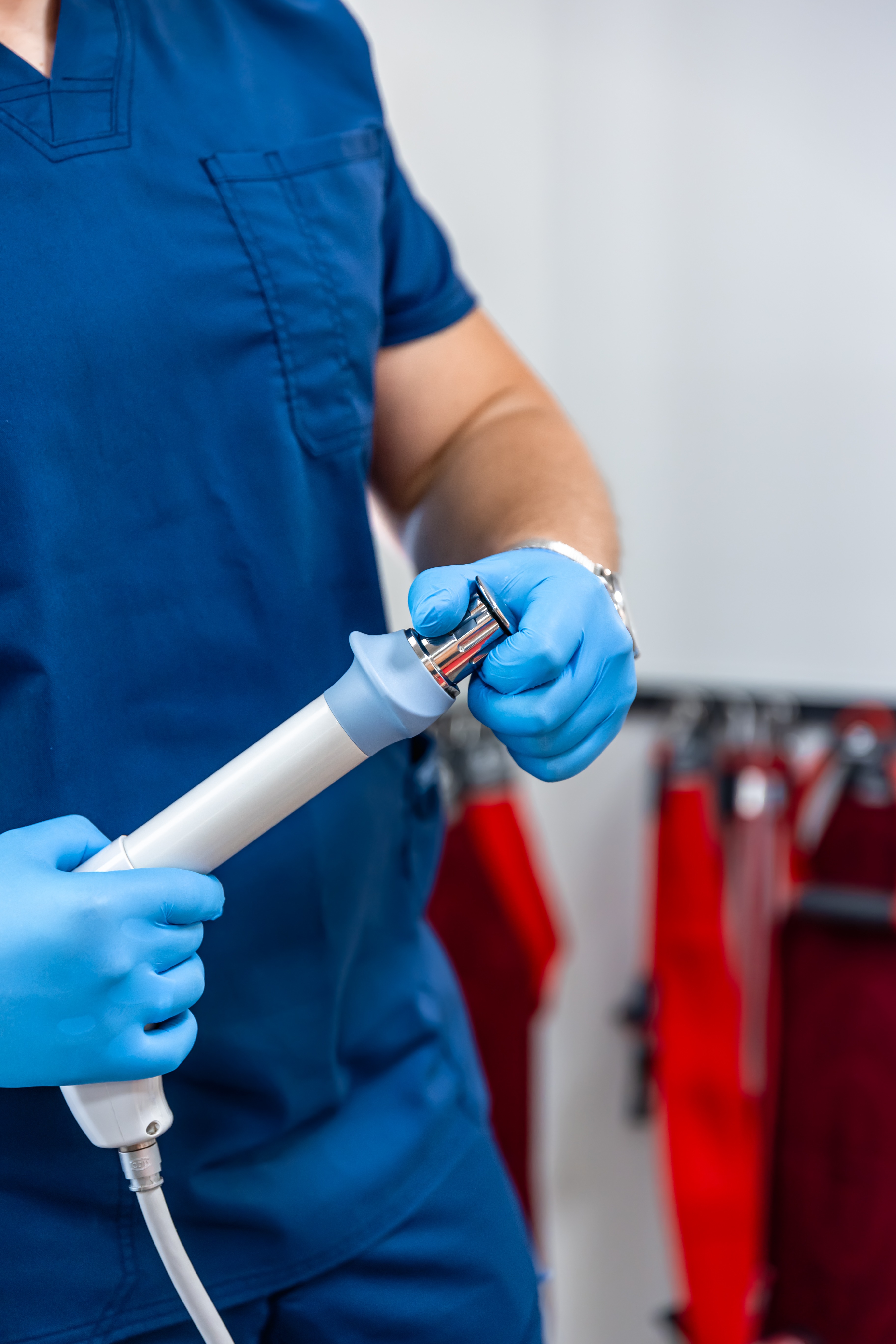What is Endoscopy?
An endoscopy is a procedure where a doctor examines the inside of a patient’s body using an instrument called an endoscope. The endoscope is a flexible tube with a light and a camera, which allows healthcare providers to see areas like the esophagus, stomach, and small intestine.
The procedure helps diagnose a variety of conditions such as:
- Ulcers
- Gastroesophageal reflux disease (GERD)
- Inflammatory conditions like Crohn's disease or gastritis
- Tumors or cancers
- Bleeding or infections
Endoscopies are typically performed under local anesthesia or mild sedation, allowing patients to remain awake but relaxed. While some discomfort may occur, such as mild gagging during an upper endoscopy, the procedure is minimally invasive and quick, often taking between 15 to 30 minutes.
What is Colonoscopy?
A colonoscopy is similar to an endoscopy but focuses on the lower digestive tract—specifically the colon (large intestine) and rectum. The procedure uses a colonoscope, which is a longer, flexible tube equipped with a camera to inspect the colon for issues such as:
- Colorectal cancer
- Polyps (growths that may become cancerous)
- Inflammatory bowel diseases (like ulcerative colitis or Crohn's disease)
- Diverticulosis
Unlike endoscopies, colonoscopies typically require more extensive preparation. Patients are usually asked to undergo a bowel-cleansing regimen before the procedure to ensure the colon is clear of stool, offering optimal visibility. Sedation is commonly used during colonoscopies, and the procedure generally lasts between 30 minutes and an hour. Afterward, patients may feel bloated or crampy, but these sensations usually pass within a few hours.
Why Are These Procedures Important?
Both endoscopies and colonoscopies are instrumental in detecting serious conditions like cancer, chronic inflammatory diseases, and infections early—before they develop into more severe problems. Screening for colorectal cancer with a colonoscopy is especially recommended for individuals over the age of 45, or earlier for those with a family history or other risk factors.
Early detection can significantly improve outcomes, especially for conditions like colorectal cancer, which, when detected early, has a high survival rate.
The Role of Medical Transportation in Endoscopy and Colonoscopy
Undergoing medical procedures like endoscopies and colonoscopies often requires transportation to and from the medical facility. For patients with mobility challenges or those who are sedated for the procedure, medical transportation becomes an essential service to ensure a safe, comfortable journey.
- Post-Procedure Transportation Needs
Both endoscopies and colonoscopies often involve sedation, meaning patients are not fully alert after the procedure. For this reason, it’s crucial that patients have someone available to drive them home. However, many individuals may have mobility challenges or physical disabilities that make it difficult to get into a car or use public transportation. In these cases, medical transportation services that provide wheelchair accessible vehicles or non-emergency medical transport (NEMT) become vital.
- Wheelchair Accessible Medical Transportation
For individuals who use wheelchairs, a specialized vehicle is necessary. Wheelchair transportation services offer vehicles that are equipped with ramps or lifts to accommodate a wheelchair, along with secure straps to ensure safety during transit. These services are designed to cater to people with limited mobility, ensuring they are safely transported from their home to the healthcare facility and back.
- NEMT (Non-Emergency Medical Transportation)
Non-emergency medical transportation (NEMT) is a service that caters to patients who require assistance traveling to medical appointments but do not need emergency care. NEMT can be an essential service for elderly individuals, those recovering from surgery, or patients undergoing procedures like endoscopies or colonoscopies. NEMT vehicles can be equipped with comfortable seating, oxygen support, and wheelchair accommodations, making the journey as smooth as possible.
The Importance of Accessible Medical Transportation
For individuals with physical disabilities, elderly patients, or those undergoing procedures like endoscopies and colonoscopies, medical transportation ensures that the process is as stress-free and safe as possible. Here’s why it’s important:
-
Comfort and Safety: Patients who have difficulty walking or moving on their own can experience significant discomfort when trying to navigate public transportation or even personal vehicles. Wheelchair-accessible transportation offers comfort and security.
-
Timely Arrivals: Many procedures require patients to arrive at specific times, and a delay in transportation could lead to rescheduling, which may cause further stress or complications. Accessible transport ensures on-time arrivals at the medical facility.
-
Post-Procedure Care: After sedation, patients may feel groggy or dizzy. Having a trained medical transport driver or an assistant to help with transfers and ensure safe travel back home is essential. For those recovering from a colonoscopy or endoscopy, an accessible transport service that can cater to their specific needs makes the post-procedure experience much more manageable.
Preparing for Your Procedure and Transportation
If you're scheduled for an endoscopy or colonoscopy and require medical transportation, it’s important to plan ahead. Here’s what to do:
-
Confirm Your Appointment Details: Double-check your procedure date and time with your healthcare provider.
-
Arrange for Sedation and Aftercare: Since you’ll likely be sedated, arrange for a ride home with a family member, friend, or medical transport service. If you need wheelchair assistance, ensure the transportation company is equipped with an accessible vehicle.
-
Book Your Medical Transport Early: Accessible transportation services can be in high demand, so it’s a good idea to book at least 24-48 hours in advance to ensure availability.
-
Prepare for Recovery: After the procedure, you may experience some discomfort. Ensure your transport service can assist you as needed, especially if you feel weak or tired.
Conclusion
Both endoscopy and colonoscopy are essential procedures in diagnosing and monitoring digestive health, particularly in preventing conditions like cancer and chronic diseases. For patients with mobility challenges, medical transportation, including wheelchair accessible vehicles and non-emergency medical transport services, can make all the difference in ensuring a safe, comfortable, and stress-free experience.
By planning your procedure and transportation in advance, you can focus on your health and recovery, knowing that getting to and from your appointment will be one less thing to worry about.

